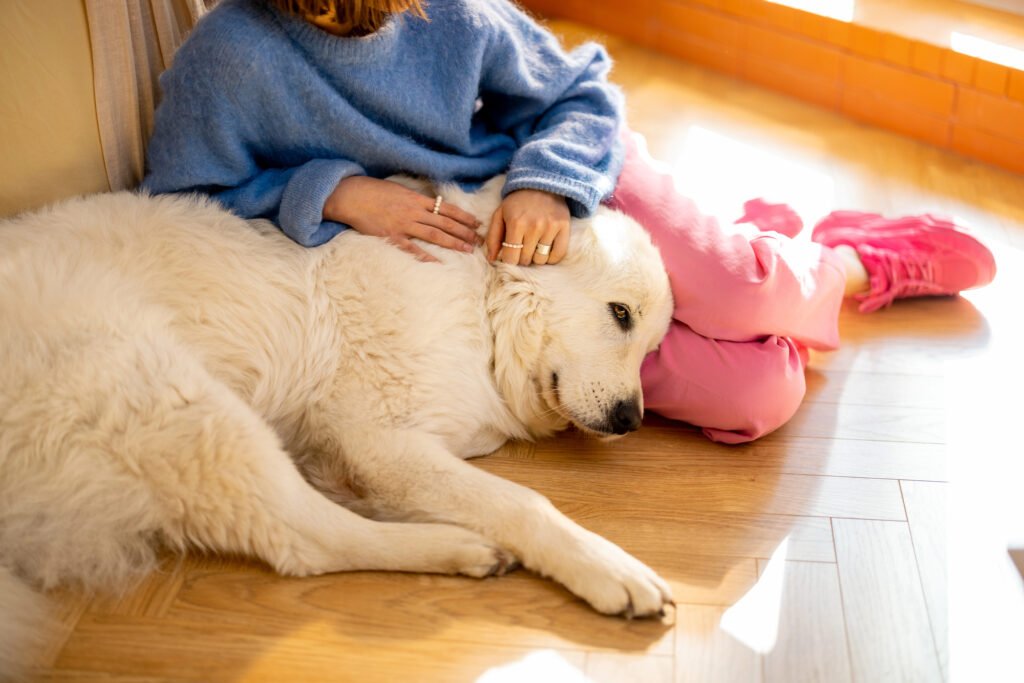When a human passes away, we often focus on the family, friends, and loved ones left behind. But quietly, and often without recognition, another soul grieves—one who cannot speak their sorrow. Dogs, our most loyal companions, feel the ache of loss deeply. According to a touching report posted on an Instagram channel called Selftrue.Journey presumably based on past research in a 1996 study called the Companion Animal Mourning Project, featured on an amazing Instagram channel Self true. Journey, dogs may begin mourning their humans within just 72 hours of their passing. Their signs of grief are subtle yet heartbreaking—small behaviors that speak volumes about the love they felt. This article explores the nuanced, emotional world of canine mourning and highlights just how deeply dogs are affected by our absence.
Understanding Canine Mourning: The First 72 Hours

Dogs experience the world through a blend of sensory input and emotional bonds. When a human dies, especially someone they shared a deep connection with, the dog may sense the absence immediately. Within the first 72 hours, these animals may begin showing visible signs of distress, confusion, and sorrow. Their routines are disrupted, their environment feels different, and the one person they depended on is suddenly gone. These rapid changes trigger grief behaviors like what we see in humans.
The First Day: Searching for Their Human

One of the most heart-wrenching behaviors seen in grieving dogs is their persistent search for their human. They may wander through the house, sniffing doorways or staring out windows. They might sit by the door, waiting. They will not move randomly through the house, but in the same exact pattern that you moved tracing your energy throughout the house.
The Second Day: Clinging Onto Memories

By the Second day, a dog might be found lying on their departed owner’s bed, sitting beside their favorite chair, or curling up on a sweater that still carries their scent. These familiar spots become sacred spaces where the dog can remain close, even if only symbolically. Moreover, their sense of scent is so powerful that by digging their nose in your belongings, they pick up the scent of your microscopic skin cells you left behind. This behavior illustrates their confusion and hope—perhaps believing their beloved person will return any moment.
The Door Vigil: Losing Sense of Time

This is one of the most heartbreaking behaviors of all which hospice nurses call “The Door Vigil.” Your dog will start sitting at the entrance you used most, not just for minutes, but hours, as if time has no meaning for them. At this point of time, food is of no consequence. They might however eat of food is offered or placed in spots where the deceased owner frequented. By doing so, a dog is preserving their connection to their loved human.
Unusual Vocalizations to Express Grief

Several families have witnessed their dogs making unusual sounds, unlike something they’ve ever made before. Some dogs become unusually quiet, almost as if they are in mourning silence. Others may bark, howl, or whine more than usual, especially at night. Some might emit a form of soft whimpering proving how the dog is expressing its deepest form of intense grief.
The Third Day: Transference of Protection

By the third day, while they still miss their departed owner, dogs will soon begin sleeping at the side of the family member grieving the most. It is as if they have been designated a new sense of purpose relating to the grief and deciding how the grieving human needs their help and protection. In most cases, it could be the partner of the departed or even a child. There are other ways dogs grieve too. Sometimes, this can also manifest as clinginess with dogs becoming extremely attached to the remaining humans in the home, seeking constant reassurance and closeness. Others might retreat into isolation, avoiding eye contact or hiding under furniture. Both behaviors are signs of emotional instability caused by the traumatic loss.
Change in Appetite: When Food No Longer Matters
One of the most immediate and noticeable signs of canine mourning is a loss of appetite. Dogs that once eagerly devoured their meals may leave their bowls untouched. Some may only nibble, while others refuse to eat altogether. This change isn’t just physical; it reflects emotional turmoil. Like humans who experience loss, dogs often lose interest in even their most enjoyable habits, such as eating.
Disturbed Sleep Patterns: Restless Days and Nights

Grieving dogs may either sleep too much or hardly at all. For some, sleep becomes a form of escape; for others, the anxiety and confusion surrounding their human’s absence keep them awake and restless. You might notice your dog pacing, waking up more often during the night, or lying listlessly in bed for hours during the day.
Lack of Interest in Play or Walks

Dogs typically delight in walks, playtime, and routines. After the loss of their human, many lose interest in these favorite activities. Toys are left untouched. Leashes bring no excitement. Even the word “walk” may fail to spark their usual enthusiasm. It’s a painful signal that their emotional world has been shaken.
Behavioral Regression: Forgetting What They Once Knew

Grieving dogs might temporarily regress in their behavior. House-trained dogs may have accidents. Well-trained dogs might ignore commands or routines. These changes are not due to disobedience but emotional overwhelm. It’s important for caregivers to respond with patience and empathy rather than punishment.
Just like people, dogs can suffer from clinical depression and anxiety. Grieving dogs may appear listless, uninterested, or anxious. They might whine excessively, pace around aimlessly, or react with alarm to minor changes in the environment. This behavior can be long-lasting if the emotional needs of the dog are not addressed.
How to Support a Grieving Dog

Helping a dog cope with the death of their human requires love, routine, and gentle reassurance. Try to maintain consistency in feeding, walking, and bedtime schedules. Spend more quality time with them—even if they seem distant. Offering comfort items that smell like their person, such as clothing, can be soothing. In cases of severe grief, consulting a veterinarian or animal behaviorist may be necessary. Many cultures believe how dogs can see between both worlds because their love does not distinguish between presence and absence.
The sorrow we see in a dog after a human’s passing is proof of their boundless capacity for love and loyalty. Dogs don’t understand death the way we do, but they understand presence—and its sudden absence. Their mourning isn’t just behavioral; it’s emotional. When they grieve us, they are saying in their own quiet way: “I miss you. I love you. Please come back.”

Andrew Alpin from India is the Brand Manager of Doggo digest. Andrew is an experienced content specialist and social media manager with a passion for writing. His forte includes health and wellness, Travel, Animals, and Nature. A nature nomad, Andrew is obsessed with mountains and loves high-altitude trekking. He has been on several Himalayan treks in India including the Everest Base Camp in Nepal.






